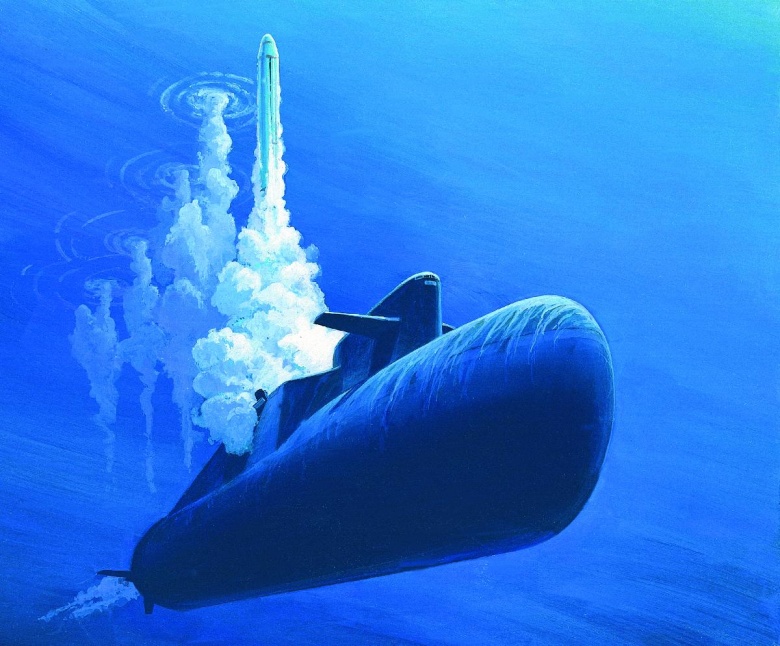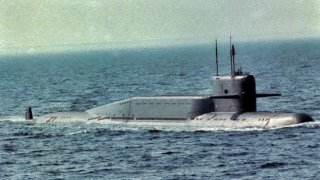Russia's Delta II-Class Submarines Had Just One Mission
The Delta-class submarines, central to the Soviet Union's Cold War naval strategy, have evolved through multiple variants since their 1970s debut. These nuclear-powered ballistic missile submarines, including the Delta I, II, III, and IV variants, were developed to counter NATO forces with strategic nuclear capabilities. The Delta II class, developed after the Project 667A Yankee-class, featured enhanced missile capacity and quieting measures for reduced detectability.
Summary: The Delta-class submarines, central to the Soviet Union's Cold War naval strategy, have evolved through multiple variants since their 1970s debut. These nuclear-powered ballistic missile submarines, including the Delta I, II, III, and IV variants, were developed to counter NATO forces with strategic nuclear capabilities. The Delta II class, developed after the Project 667A Yankee-class, featured enhanced missile capacity and quieting measures for reduced detectability. By 1975, only four Delta II submarines were commissioned, quickly succeeded by further advanced models. Today, seven Delta IV-class submarines remain active in the Russian Navy, equipped with sophisticated navigation systems and ballistic missiles, highlighting the enduring legacy of the Delta series in naval warfare.
Russia’s Delta II-class submarine primer
The Delta-class family of nuclear-powered submarines represented the backbone of the Soviet Union’s underwater fleet during the Cold War. The sub had one clear mission: to launch nuclear missiles at any target at any time.
Since their introduction in the early 1970s, several of these ballistic missile vessels have remained in service as a counter to the North Atlantic Treaty Organization (NATO). The Delta class sub-types are Project 667B Murena, Project 667BD Murena-M, Project 667BDR Kalmar, and Project 667BDRM Delfin.
The history of the Delta class:
As the arms race during the early days of the Cold War was ramping up, both the U.S. and the USSR were seeking enhanced military systems. New technologies were prevalent across the board, from main battle tanks and airframes to frigates and submarines. Soviet engineers became increasingly interested in developing a strong sea-based deterrent that could go up against America’s superior delivery systems. By the mid-1950s, the USSR prioritized experimenting with submarines fitted with strategic nuclear weapons.
Introducing the Delta IIs:
Prior to the Delta series, the Soviet’s first successful SSBN vessels were Project 667A (designated by NATO as Yankee). These submarines were constructed between 1964 and 1974, designed to patrol the mid-Atlantic and deter their American counterparts. These ships mirrored the U.S. Navy’s Polaris submarines in many ways and were equipped with enhanced streamlining that resulted in stronger underwater performance. The Yankee-class submarines sported sixteen submarine-launched ballistic missiles with ranges between 1500-2,500 nautical miles.
Following the development of the 667B Delta I submarines, Soviet engineers immediately began researching its successor. The Delta I would ultimately serve as the foundation for the Delta II. The Rubin Central Design Bureau for Marine Engineering oversaw the development of the 667BD vessels, primarily designed to sport more missiles than its predecessor. To accommodate this modification, the pressure hull was lengthened, where four additional missile tubes were positioned.
As detailed by Nuke FAS, the D-9D launch system and sixteen R-29DD missiles were incorporated into the Delta II-class submarines. Additionally, these ships received improved quieting measures, including the mounting of steam turbines on shock absorbers to minimize possible detection by enemy submarines.

By 1975, only four of the planned Delta II-class submarines ever entered service. Upon their introduction, Soviet engineers quickly focused on producing subsequent Delta variants. The K-182 was the first of this class to be commissioned in 1975, followed by K-92, K-193, and K-421.
The Delta IV variant
The Delta IV variant is the fourth and final iteration of the family of forty-three SSBNs. Measuring more than 540 feet in length, the Delta IVs are also armed to the teeth. Each ship in this class is fitted with four torpedo tubes and sixteen silos, which were originally armed with R-29RM Shtil submarine-launched ballistic missiles. Still, they were later upgraded to the R-29RMU Sineva. As explained by Peter Suciu, “The Project 667BDRM Delfin's Shlyuz navigation system provides for the improved accuracy of the missiles and is capable of stellar navigation at periscope depths. That navigational system employs two floating antenna buoys to receive radio messages, target destination data, and satellite navigation signals at great depth.”
Today, seven Delta IV-class submarines remain in service with the Russian Navy.
About the Author: Maya Carlin
Maya Carlin, National Security Writer with The National Interest, is an analyst with the Center for Security Policy and a former Anna Sobol Levy Fellow at IDC Herzliya in Israel. She has by-lines in many publications, including The National Interest, Jerusalem Post, and Times of Israel. You can follow her on Twitter: @MayaCarlin.


